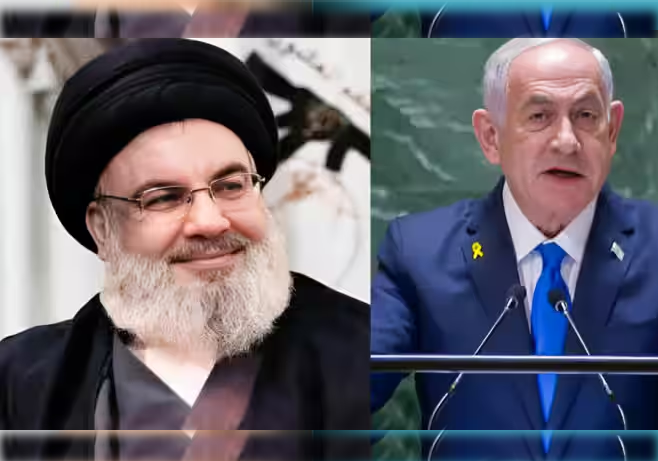Nasrallah Assassination: How Did Israel Target the Hezbollah Chief Hiding 60 Feet Underground?

BEIRUT: In a highly sophisticated and covert operation, Israel allegedly succeeded in targeting Hezbollah leader Hassan Nasrallah, who was believed to be hiding in a fortified underground bunker deep beneath Beirut. Reports suggest that Israeli intelligence, backed by advanced technology and precise military strikes, neutralized the Hezbollah chief despite the extensive measures taken to ensure his security.
Nasrallah, known for leading Hezbollah since the 1990s and for orchestrating several operations against Israel, has long been a target for Israeli forces. Over the years, he rarely appeared in public and operated from secret locations to evade surveillance and potential attacks. His underground bunker, reportedly 60 feet below the surface, was designed to withstand aerial strikes and minimize detection.
How Israel Targeted Nasrallah
- Advanced Surveillance Technology: Israeli intelligence is believed to have utilized cutting-edge satellite technology, drones, and cyber intelligence to gather information on Nasrallah’s whereabouts. Over months, if not years, Israel reportedly tracked the movement of key Hezbollah figures, leading to the discovery of the Hezbollah leader’s underground hideout.
- Human Intelligence and Infiltration: Apart from technological capabilities, Israel may have relied on human intelligence, or HUMINT, by deploying assets within Hezbollah or working with regional allies. These sources could have provided crucial information about Nasrallah’s movements, bunker locations, and security measures.
- Precision-Strike Weapons: Despite the bunker’s depth and heavy fortifications, Israeli forces likely employed advanced bunker-busting munitions, which are designed to penetrate several meters of concrete or earth before detonating. These weapons are capable of targeting deeply buried structures with pinpoint accuracy. Some reports suggest that guided missiles or specialized bombs were used in the operation.
- Electronic Warfare and Signal Interference: To ensure that Nasrallah could not escape or call for reinforcements, Israeli forces might have employed electronic warfare techniques to jam communications and block any potential countermeasures from Hezbollah. This would have neutralized the group’s ability to respond effectively.
Fallout from the Operation
The reported assassination of Nasrallah would mark a significant victory for Israel, as the Hezbollah leader has been a major adversary for decades. However, the operation is likely to escalate tensions in the region, with Hezbollah threatening retaliation. Nasrallah was a central figure in the Iranian-backed group’s operations against Israel and was considered a symbol of resistance by many in Lebanon and the Arab world.
As of now, Hezbollah has not officially confirmed the assassination, but regional media outlets have reported increased security activity in Beirut. Israeli officials have remained silent on the specifics of the operation, but defense analysts suggest that this could be one of the most audacious strikes conducted in recent history.
If confirmed, Nasrallah’s death could shift the balance of power in Lebanon, destabilizing Hezbollah and altering the dynamics of the Israeli-Hezbollah conflict. However, it may also provoke a cycle of retaliatory violence, with both sides preparing for potential escalations in the near future.





